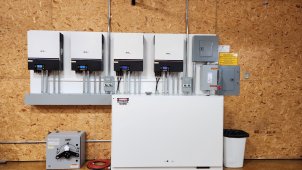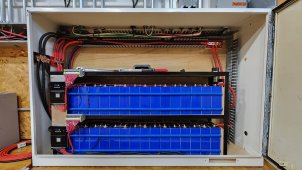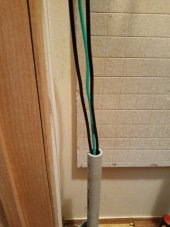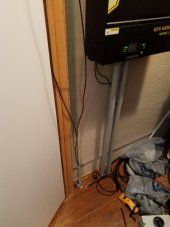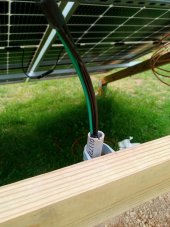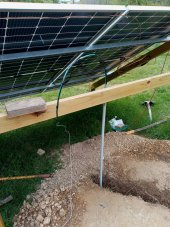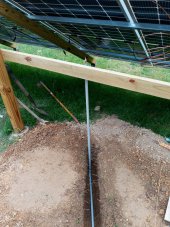Hedges
I See Electromagnetic Fields!
- Joined
- Mar 28, 2020
- Messages
- 20,660
I just came in after trying to get wires pulled, I'm trying to pull three 10awg solid thru half inch pvc for about 60ft run, and I couldn't get it past 40ft or so no matter what I tried. Had my wife feed the wires in while I pulled but it just wouldn't go through. I gave up after it got dark, my hands were hurting and I was hungry. I'll try it with pull lubricant tomorrow, hope it helps because don't want to put in wider conduit or thinner wire.
I've pulled multiple sets of 12 awg through conduit, approaching the fill limits. More recent ones were stranded, which helps.
With one wire pulling several daisy-chained, I would wrap it around a piece of pipe and pull the pipe.
When more oomph needed, I used the pipe as a pry bar, getting some mechanical advantage on the tension.
I'm not looking forward to the last couple I plan to do.
Next time use wider conduit, and stranded.
1/2" schedule 40 PVC, 0.602 ID
Schedule 80 0.526 ID
PVC Piping Dimension Chart for Sch 40 & Sch 80
Looking for PVC piping dimensions? Commercial Industrial Supply compiled dimension specs for both Schedule 40 (white) and Schedule 80 (gray) piping. Our PVC pipe sizing chart below includes O.D. (outside diameter) as well as I.D. (inside diameter) and PSI ratings. Continue reading →
10 awg solid THWN 0.161 OD
3 x 0.161 = 0.483
That's less than conduit OD. Good news is 3 across should make it around bends without getting wedged.



